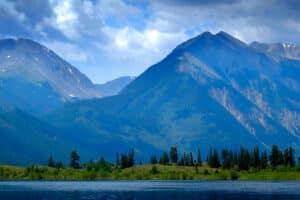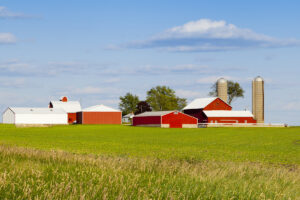Since its construction in 1940, Lake Greenwood has become a valuable asset of the local community as well as for the entire Upstate of South Carolina. This 11,400 acre lake, which is the main water source for Greenwood and much of Greenwood County, also serves as a hub for a number of recreational pursuits which have fostered significant population and economic growth in this region. History has revealed that both positive impacts and challenges result from increased levels of population and economic activity in a given area – and the Lake Greenwood community is no exception to this rule.
According to the Saluda-Reedy Watershed Consortium (SRWC), “a broad based coalition of universities, non-profit organizations, government agencies and private businesses which have conducted a wide range of research on Lake Greenwood and its watershed”, several obstacles concerning water quality must be overcome in order to ensure the future health of Lake Greenwood. The 745,600 acre Saluda-Reedy Watershed (SRW) and Lake Greenwood have a long history of dealing with unwanted effluents. For decades the Saluda River and the Reedy River carried away many types of wastes from growing industry and development in the Upstate. The implementation of regulations on unwanted industrial effluents such as the Clean Water Act of 1972 made a major impact on the current water quality of the SRW and Lake Greenwood. However, Lake Greenwood and the SRW currently face new health threats – the SRWC has identified sediment from upstream development, stormwater runoff, and phosphorus from wastewater discharges as the main causes that affect the cleanliness and levels of water in Lake Greenwood.
A study by the SRWC reports that 307 acres of Lake Greenwood has been lost to sedimentation in the upper part of the lake. If this process continues there is the potential for negative impacts such as the loss of waterfront land, harmful pollutants, and decreased boat and recreational access. Major algae bloom, which Lake Greenwood experienced in 1999, is another real threat…
“[w]hen an overload of phosphorus and nitrogen are introduced to the lake, algae growth can increase to an uncontrollable level. As the algae dies and sinks to the bottom, the decay process consumes a substantial amount of dissolved oxygen. A combination of low bottom-water oxygen levels and high surface water temperatures that often occur in the summer can leave many fish and other aquatic life with little or no suitable habitat.”
Land use along the shore of Lake Greenwood is another critical aspect of the water quality. Some lakeside development produces soil erosion, loss of shoreline vegetation, and toxic runoff which contribute to poor water quality.
This research makes a strong argument that the health of Lake Greenwood is in jeopardy. Growth and development in upstate South Carolina have once again reached a level that is causing detrimental impacts to Lake Greenwood. However, these findings also shed light on the implementation of proven methods that helped Lake Greenwood overcome water quality problems forty years ago. Although government regulations and policies like the ones implemented in the past are part of the solution, they are not the only effective measures to help improve the water quality. Conservation easements on properties within the Saluda-Reedy Watershed can have a major impact in the effort to improve Lake Greenwood’s water quality. These properties consist of those with Saluda & Reedy River frontage as well as lake front parcels and the preservation of land within this watershed will have a direct effect on reducing the amount of pollution that enters Lake Greenwood.
In addition to qualifying for conservation easements, large acreage tracts with significant frontage on Lake Greenwood are unique pieces of real estate with regards to the current real estate market. Unlike large timber and recreational tracts in this area, a strong demand for lake lots is in place resulting in stable values throughout the economic downturn. This market indicator reveals that undeveloped lake frontage has good investment potential from a lake lot development perspective. A savvy investor should recognize the enhanced investment potential of a large acreage tract with significant frontage on Lake Greenwood. A property with these features offers significant tax benefits through a conservation easement on designated areas as well as mitigation opportunities for sustainable lake lot development. In addition, the stark contrast of the current market for lake lots and large acreage recreational and timber tracts allows an investor to assess the value of a large acreage tract with significant lake frontage from two separate vantage points which is advantageous.
Lake Greenwood is a treasured resource of Upstate South Carolina and for the last seventy years this lake has contributed to the economic growth of the area while also facing water quality challenges. This constant struggle is a familiar story for waterways and wetlands across the southeast and the decision to sacrifice clean water for financial returns and vice versa is never easy. Fortunately, in some circumstances the two are not mutually exclusive. Sustainable development, if implemented properly, can facilitate the co-existence of clean water and financial returns given certain market trends and property location. These conditions currently apply to large acreage tracts with significant undeveloped lake frontage on Lake Greenwood resulting in a rare opportunity to assist in the protection of Lake Greenwood with a positive return on investment.
This content may not be used or reproduced in any manner whatsoever, in part or in whole, without written permission of LANDTHINK. Use of this content without permission is a violation of federal copyright law. The articles, posts, comments, opinions and information provided by LANDTHINK are for informational and research purposes only and DOES NOT substitute or coincide with the advice of an attorney, accountant, real estate broker or any other licensed real estate professional. LANDTHINK strongly advises visitors and readers to seek their own professional guidance and advice related to buying, investing in or selling real estate.









Check out our Huff Creek Properties Website to find out information on a 756 acre property along the Laurens County shores of Lake Greenwood with great conservation opporunity.
http://www.huffcreekproperties.com